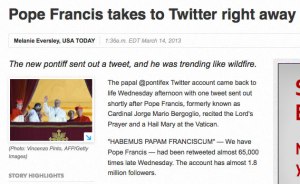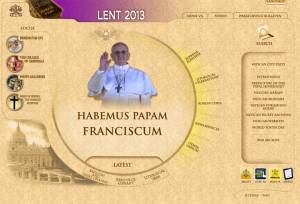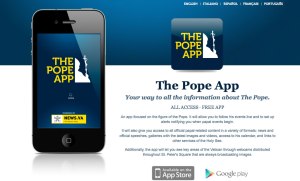Pope Francis helped me teach class this week.
Every semester, I teach a class introducing the field of and functions of public relations. That introductory lesson then builds into a teaching unit or module on public relations.
As you know if you’ve taught a course more than once, teaching a class that you’ve previously prepared for typically means planning your lesson based on what you did last time.
Working from what you’ve taught before has benefits, as you already have the student objectives identified, key concepts determined, perhaps slides prepared. You may have some notes (at least mental notes) of what adjustments you needed to make when teaching the topic again.
But the disadvantage can be that you teach last semester’s lesson again this semester without any new thinking about the lesson and without any changes.
[I had an undergrad professor once tell us in class that he knew he needed to update his lecture when the paperclip on his lecture notes was rusty. I guess today’s college prof might say the lecture would need updating when the PowerPoint software was upgraded.]
 So this is where Pope Francis comes in.
So this is where Pope Francis comes in.
The evening before class, I gathered my materials to plan for class. I had my lecture slides and notes from the previous semester.
One of the topics for the lecture is discussing the traditional tools of public relations (news releases, media kits, public service announcements, etc.) and then the new tools (websites and blogs, Twitter, etc.).
Just hours before, Cardinal Jorge Bergoglio had been elected by the cardinals to be the new pope.
“I wonder what the church has done in response to this election,” I thought.
 I went to the Vatican website and found that it already was announcing Pope Francis. On the website, I also saw that I could put a Vatican widget on my blog and could download The Pope App from iTunes.
I went to the Vatican website and found that it already was announcing Pope Francis. On the website, I also saw that I could put a Vatican widget on my blog and could download The Pope App from iTunes.
That’s when I knew that Pope Francis would be joining us for class. I included slides about public relations using Web 2.0 tools that included the Vatican website and a screen capture from iTunes of the app.
The next morning, I did a quick check for news about Pope Francis and found a news article that announced that he had sent his first tweet. I made a screen capture of that news story and included it in my slides.
In class, when I reached the transition from the traditional media tools for public relations to new tools, I asked what national leader was elected the previous day. Almost everyone called out “Pope Francis.”
[We did note later that another world leader was elected that day, too. Xi Jinping was elected president of China, governing a population is 1.3 billion. Worldwide the Catholic membership is 1.2 billion.]
 I showed the slide about the Pope’s first Tweet. The class of 18- to 21-year-olds gave a laugh. This definitely caught their attention.
I showed the slide about the Pope’s first Tweet. The class of 18- to 21-year-olds gave a laugh. This definitely caught their attention.
Then I said that the Vatican website had been updated, and I showed the newly updated website. We noted that public relations professionals need to be able to respond immediately when the need arises – no waiting until the next work day.
They were surprised at the social media options offered on the Vatican website – and they were really taken aback when I then showed the slide for The Pope App. There were even a few gasps.
“How old is Pope Francis?” I asked.
“76,” they called out.
“What does this say about the Pope?” I asked.
“He’s hip,” several said.
We knew that the Pope wasn’t sending the tweets himself. We knew he wouldn’t be the one managing the social media efforts from the Vatican. But we talked about the importance of organizations being able to use social media to reach young people and others and to project a modern image for the organization and its leaders.
I could have discussed the value of Web 2.0 tools for public relations without Pope Francis. But recognizing the teaching connection of a current event and then taking the time to incorporate that example (with visuals) into class makes the class information much more memorable. And that’s what we’re interested in — learning that lasts after students leave the classroom.

What a great post! You always inspire me and give me great ideas! Thank you for sharing. Also…thanks for letting me know about the Pope app…cool!
LikeLike
Thanks for the feedback. You’ve certainly given me some great research and teaching ideas, too!
LikeLike
Julie, this lesson is an inspiration to use the tools of the time for learning to communicate effectively. You’ve just modeled effective mentoring for mentors and mentees and the rest of us too.
LikeLike